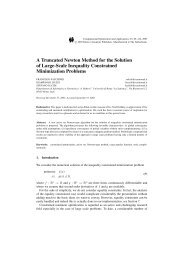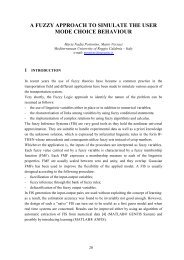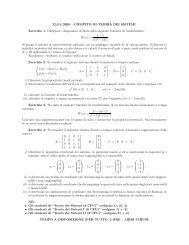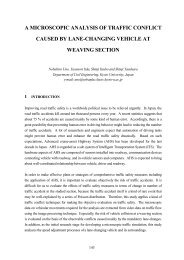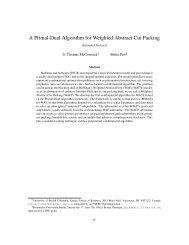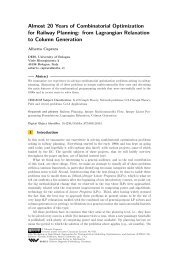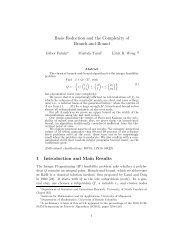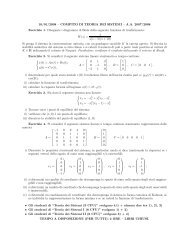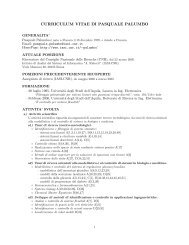OVERVIEW OF ROAD AND MOTORWAY TRAFFIC ... - Iasi.cnr.it
OVERVIEW OF ROAD AND MOTORWAY TRAFFIC ... - Iasi.cnr.it
OVERVIEW OF ROAD AND MOTORWAY TRAFFIC ... - Iasi.cnr.it
Create successful ePaper yourself
Turn your PDF publications into a flip-book with our unique Google optimized e-Paper software.
Overview of road and motorway traffic control strategies 35<br />
rapid developments in the areas of communications and computing (telematics), but <strong>it</strong> is<br />
qu<strong>it</strong>e evident that the efficiency of traffic control directly depends on the efficiency and<br />
relevance of the employed control methodologies.<br />
disturbances<br />
demand<br />
incidents<br />
control<br />
inputs<br />
Control<br />
Devices<br />
Control<br />
Strategy<br />
Traffic<br />
Network<br />
Sensors<br />
Surveillance<br />
total time spent<br />
measurements<br />
REAL WORLD<br />
COMPUTER<br />
goals<br />
Human-Machine<br />
Interface<br />
Fig. 1. The control loop.<br />
Figure 1 illustrates the basic elements of a control loop. The traffic flow behaviour in<br />
the (road or freeway or mixed) traffic network depends on some external quant<strong>it</strong>ies that are<br />
classified into two groups: Control inputs that are directly related to corresponding control<br />
devices (actuators), such as traffic lights, variable message signs, etc.; Disturbances, whose<br />
values cannot be manipulated, but may possibly be measurable (e.g. demand) or detectable<br />
(e.g. incident) or predictable over a future time horizon. The network’s output or<br />
performance is measured via su<strong>it</strong>able indices, such as the total time spent by all vehicles in<br />
the network over a time horizon. The task of the Surveillance is to enhance and to extend<br />
the information provided by su<strong>it</strong>able sensors (e.g. inductive loop detectors) as required by<br />
the subsequent control strategy and the human operators. The kernel of the control loop is<br />
the Control Strategy, whose task is to specify in real time the control inputs, based on<br />
available measurements/estimations/predictions, so as to achieve the pre-specified goals<br />
(e.g. minimization of total time spent) desp<strong>it</strong>e the influence of various disturbances. The<br />
relevance and efficiency of the control strategy largely determines the efficiency of the<br />
overall control system. Therefore control strategies should be designed w<strong>it</strong>h care, via<br />
application of powerful and systematic methods of optimization and automatic control,<br />
rather than via questionable heuristics [1].



